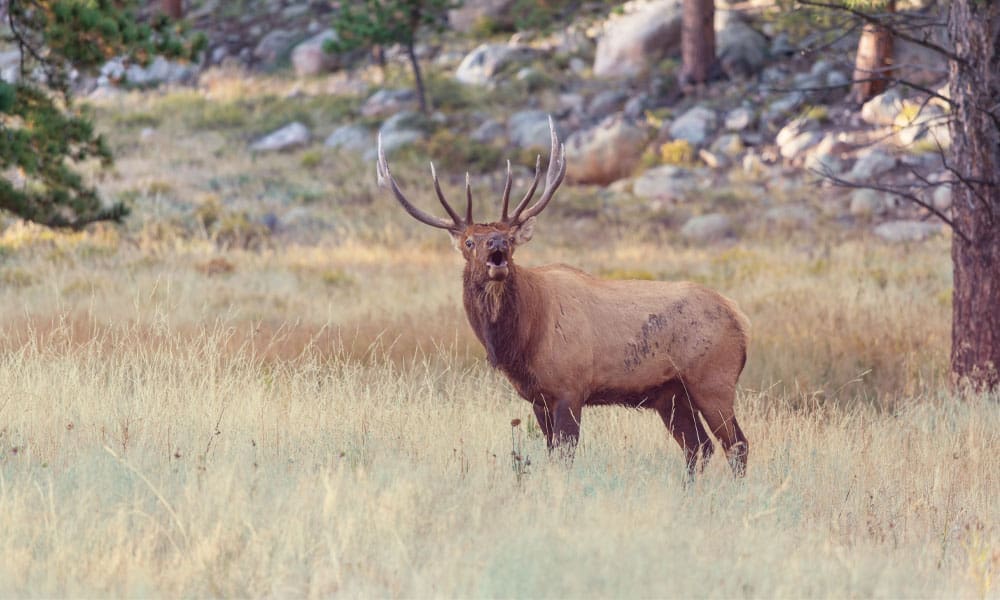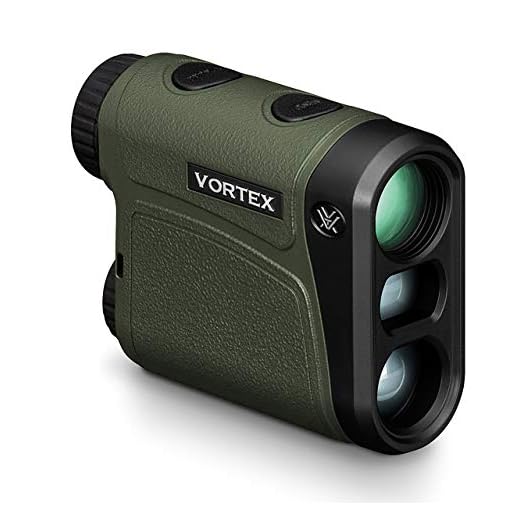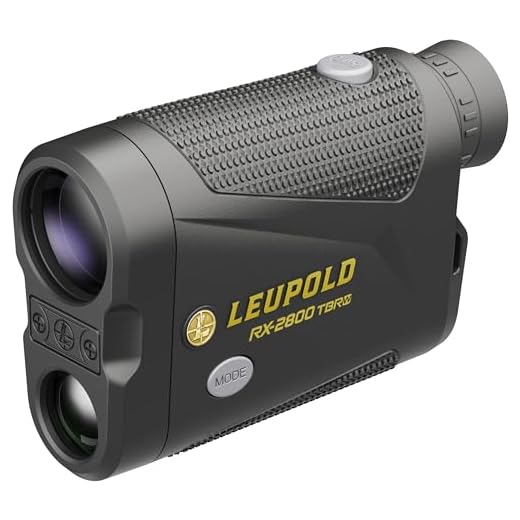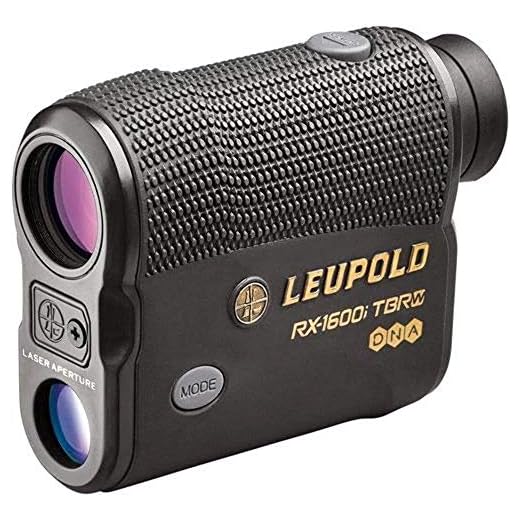When you are in the field it’s important to have everything, you need to make the most accurate shot, these feature-packed range finder picks will make sure you get an accurate shot at the big game animal of your dreams.
A range finder is a must for archery and rifle hunters. Range finders help to make sure that you have a reliable and accurate distance to your target when preparing for a shot, range finders are pocket-size powerhouse hunting gear items that give you the information you need in the field when making a kill shot.
What is a Range Finder?
A range finder is a tool used for measuring distances or locating points in space, based on the concept of triangulation. In a nutshell, the basic function of a range finder is the same across almost all range finders on the market. Hunters use the range finder by pointing the range finder device at a target in the field, pressing a button, and then the range finder will provide the hunter with a readout of how far away the target is.
What you need to know about range finders is that it all comes down to what type of hunting and shooting experience and environment you’ll be in. Some of the features we look for in a range finder are listed below, but make sure your needs fit into one or more categories before picking which model of range finder best suits YOU!
Keep reading to the bottom of this article to view our favorite range finders for hunting!

What Should You Consider When Buying a Range Finder?
Range Finder Magnification
A rangefinder is a great tool for finding the distance of game animals in the field. The main advantage of using a range finder is that you get a fairly decent level of magnification and accuracy for a relatively low price. The main disadvantage of range finders is that they generally lack zoom capability.
If you hunt in areas where there are trees, a good range finder will help you pinpoint the location of game animals easily. Which makes using a range finder, a great and inexpensive alternative to hunting binoculars.
The Objective Lens Diameter (O.L.D) of Range Finders
The scope of the range finder is similar to that of a spotting scope, but with a smaller objective lens diameter (O.L.D). The objective lens diameter (O.L.D) is the diameter of the viewing field which is created by the exit lens on the range finder.
Most range finders fall in the 25-millimeter range. Most binoculars have 40 to 50-millimeter objective lens and the spotting scope is 50 to 100 millimeters. So, by comparison, a range finder has roughly half or 50% less objective lens diameter (O.L.D) than that of a spotting scope. So, when using a range finder, you’ll have less field of view. But you do not need much, as you are only using the range finder to pinpoint the distance to your target so that you can make an accurate shot.
Range Finder Comfort
The small form factor of range finders makes them easier to hold in one hand steadily for quick target distance calculations.
But many hunters might consider them uncomfortable to use, as you have to look through them with only one eye. However, you will not be using a range finder, as often as you do a pair of hunting binoculars. So, this makes range finders an important hunting gear item.

The Maximum Range Capability or M.R.C of Range Finders
Many hunters searching for a range finder look at the maximum distance the range finder can accurately detect.
The thing about range finders that most hunters are unaware of is what the maximum distance of the range finder is. I mean, if you’re looking for a range finder that is really accurate and precise then yes – you need to know the maximum distance of the range finder.
The numbers that are listed by the range finder manufacturers are often a best-case scenario number based on the range finder’s capability to get a reading from a large, bright, reflective surface. It’s good to note that laser range finders are not as accurate at calculating distance when it comes to non-reflective objects such as trees and smaller game animals at long distances.
The relationship between price and performance when it comes to range finders is not always linear. In most cases, the more expensive range finder will offer better results than slightly cheaper range finder alternatives. So, if you’re a hunter that is seeking to buy a high-end range finder with high-end components like the ones used by more professional hunters, you’ll have to spend a bit more money. But the range finder you’ll be getting will be well worth the money you spend.
To find the perfect range finder for your hunting needs, it is important that you consider what type of shooting and what game you’ll be hunting most often. If you will only be using the range finder for occasional target practice or casual hunting, there isn’t really any need- to invest heavily in a very high-end range finder.
We always advise hunters when you’re looking for a range finder, make sure to consider the distance expectations you’ll possibly face in real shooting environments and pick a range finder that is best suited towards the hunting conditions it’ll be used for. Ideally, choose a range finder that is designed and advertised towards your specific hunting or shooting needs.

For example, when you’re bow hunting, most of the time your target animal will be within a few yards of you – most often not further than 70 or so yards away. So, in these hunting situations, it’s very important to know how far away that game animal is, which makes using a range finder invaluable!
Long-range shooting can be a difficult and demanding task. Even the most skilled long-distance shooters and its often limited by ballistics, which means long-range hunters will possibly have shots out to around 1,000 yards at game animal targets such as antelope. In hunting situations such as this, a range finder is nothing more than a valuable resource to the hunter.
The truth of the matter is that most hunters will only be taking shots at big game animals within the ranges of 50-300 yards and it should go without saying that to take a shot at a game animal at more than 500 yards is beyond the skill level of most hunters and would even be considered an unethical shot by the standards of many hunters.
So, if you’re an average hunter who’s looking for the best range finder that will help you on your next hunt – look no further. We’ve compiled our top five picks from all of our testing and reviews into this list of range finders.
With our top picks for rangefinders, you’ll be ready to take on any hunt!
Our List of the Top 5 Range Finders
Field-Tested Favorites
Features
| Part Number | LRF101 |
| Model | LRF101 |
| Warranty | Unlimited, unconditional lifetime warranty. |
| Color | BLACK |
Features
| Part Number | 171910 |
| Model | 0603-2294 |
| Warranty | Leupold's Gold Ring 2-Year Electronics Warranty |
| Color | Black |
| Release Date | 2019-11-07T00:00:01Z |
| Size | 7x |
Bushnell Engage Hunting Laser Rangefinder_LE1300SBL, Multi, One Size
Features
| Part Number | LE1300SBL |
| Model | LE1300SBL |
| Color | Multi |
| Release Date | 2019-09-01T00:00:01Z |
| Size | One Size |
Features
| Part Number | 173805 |
| Model | 173805 |
| Warranty | Leupold's Gold Ring 2-Year Electronics Warranty |
| Color | Black (173805) |
| Release Date | 2019-11-07T00:00:01Z |
| Size | Black (173805) |
Features
| Part Number | RRF 181 |
| Model | RRF-181 |
| Warranty | Unlimited, Unconditional Lifetime Warranty |
| Color | BLACK |
| Size | OS |
| Language | English |
In Conclusion
A range finder is a great hunting gear item tool for any hunter to have and use. Range Finders help you identify the distance of your target and can make your shooting more accurate, which means that not only will you be a successful hunter. You’ll also have more successful hunting seasons to come!





